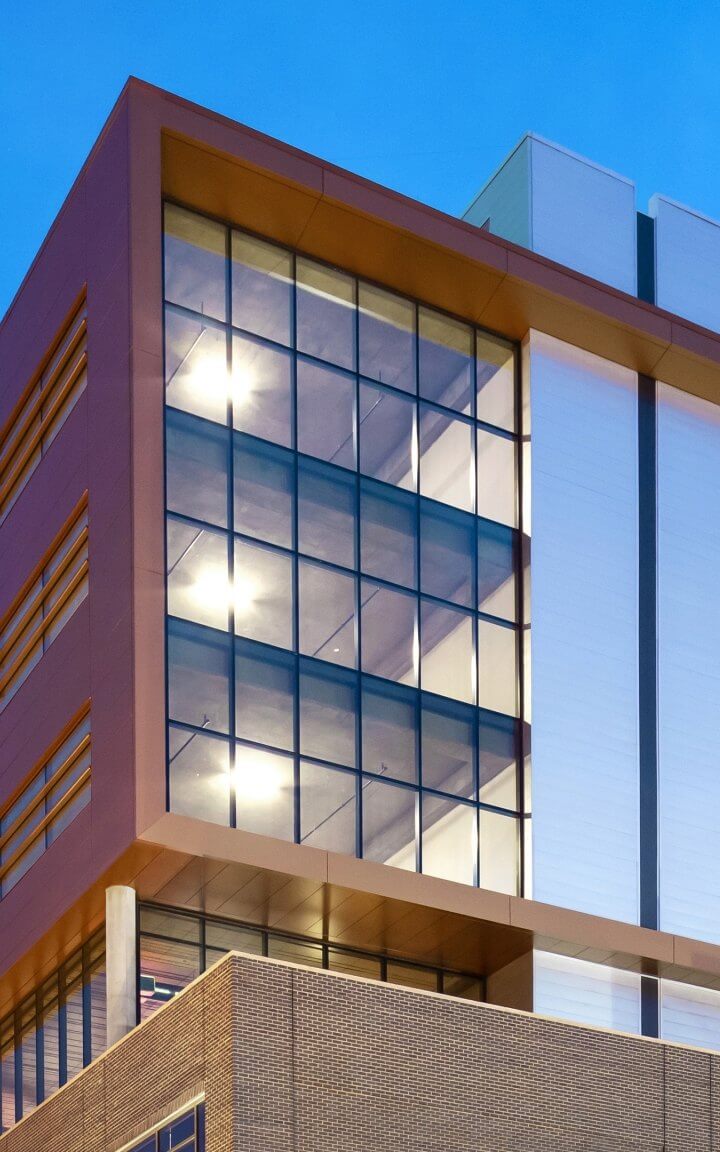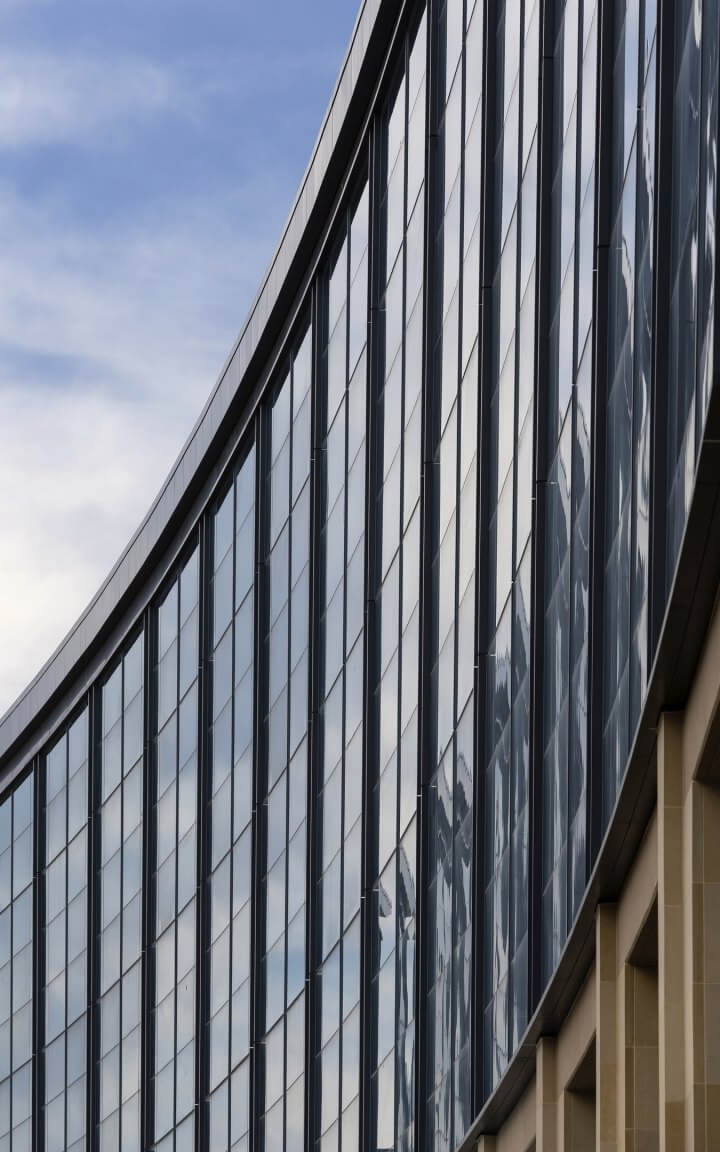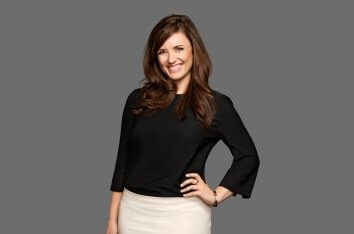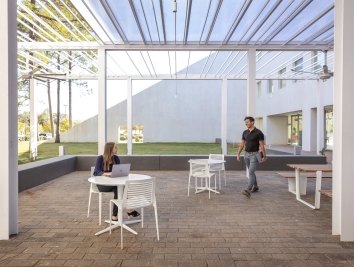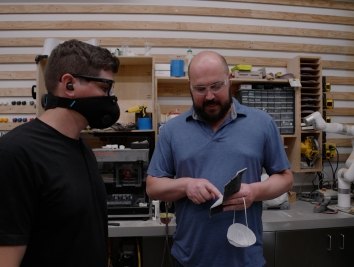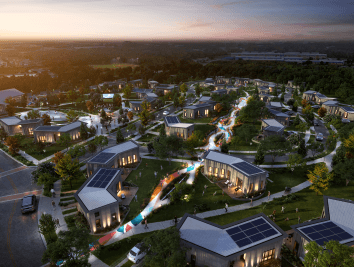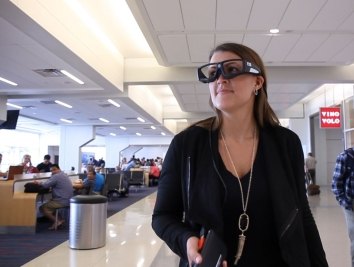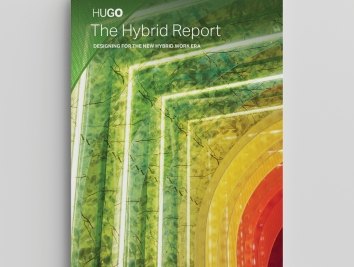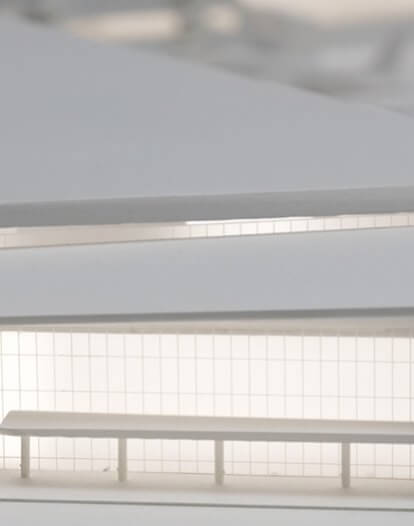Research & Innovation
Pioneering More Human Places
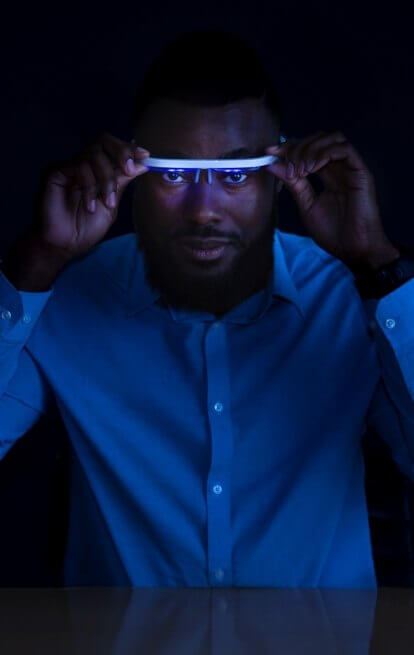
Of all the questions we ask on the Hugo team, none are more foundational than these: How can we make the built environment more human-centered? And how can we shape future innovations that will change our industries and the way we design?
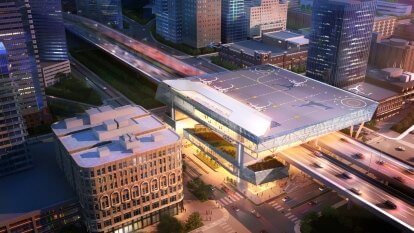
Uber CONNECT | EVOLVED
Hugo is Corgan’s research and innovation incubator, a space where moonshot ideas can not only be imagined, but gain traction.
Named after the birthplace of our founder, Jack Corgan, Hugo represents a wellspring of wonder and creativity; a place where sparks find the kindling to burst forth into flame. If curiosity and discovery are the ethos of Corgan Culture, Hugo is where they begin to take physical form.

TMGCore Booth
Society and technology shape each other — it’s a truth that’s both intuitive and profound. By exploring this dynamic, developing deeper human insights, and discovering unrealized technological potential, we can close the empathy gap, bring next-level intentionality to our designs, and create transformative experiences for users.
Design Sprint — Vertical Farming
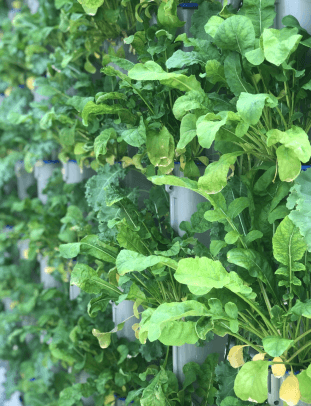
We pioneer for our clients and our firm. And if we’re doing our job well, discomfort is often the inevitable companion to progress. It’s one thing to imagine a totally new idea, and another to realize that, with a few big leaps, it’s not only possible, it might actually happen.

Design Sprint — Crossroads Learning Pods
Hugo merges the tried and true design abilities Corgan is known for, with innovations that help our clients maximize the impact of their project and reduce their risk in the decades to come. Because if a building is expected to last 30 to 50 years or longer, the needs, challenges, and standards of the future must be imagined along with it.
And there’s no better way to anticipate the future than to create it yourself.
Hugo’s Latest Work
Our work comes to life through research, reports, and real-world applications across our clients’ sectors: Spaceport concepts for low-orbit travel. Fully-functioning mobile data centers. Vehicle-to-grid energy models where buildings become batteries. A mesh network of hyperlocal schoolhouses. Olfactory Architecture that further unites senses with structures… In the Hugo sandbox, questions that begin with “what if,” often hold the potential to become what’s next.
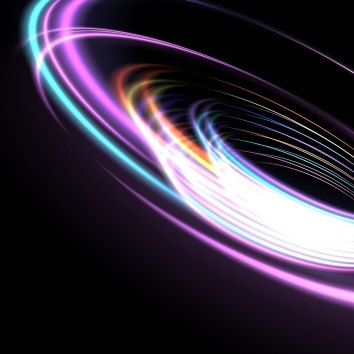
2023 Curiosity Report — Taking Action for Positive Change
Lofty goals are easy to make, but measurable impact requires thoughtful action. As we identify areas in our industry to challenge, iterate, and build solutions toward, we build momentum from the initial spark of innovation and bring our future more into focus.
In this edition of the Curiosity Report, we explore the challenge and opportunity for design to actively engage with the evolution of our planet, philosophies, and society.
Tap into the power of AI. Optimize how we learn and connect with each other in the metaverse. Proactively track our carbon footprint and uncover new materiality in the circular economy. Together, we're investigating what the shifts in human behavior and emerging technology mean for future of design--applying what we know now to shape a future we haven't yet imagined.

2022 Curiosity Report — Designing with New Energy
If Buckminster Fuller was correct in that “the best way to predict the future is to design it,” then a cleaner, healthier, and more sustainable tomorrow requires a transformation in how we approach the production, distribution, and consumption of energy.
An infinitely complex ecosystem made even more complex by the several ways we define it, generate it, and use it, this year’s Curiosity Report investigates that which powers our world — what keeps people, ideas, business, and our ecosystems running — and with renewed focus, explores how design can advocate for a better tomorrow. From smart agriculture and microgrids to urban windfarms and rebooting our workforce, step inside the future of energy.
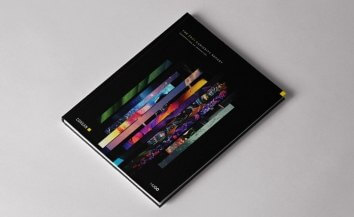
The 2021 Curiosity Report — Perspectives on Innovation
Perspectives, technically speaking, weave together our understanding of both art and science. It’s a technique that adds depth and volume to a flat plane. It makes objects on paper appear to look like they do in the physical world. Figuratively speaking, though, perspectives shape how we look at and perceive the world around us. When you have a tricky problem that you can’t seem to solve, what do you do? Research shows time and again that when we look outside ourselves — when we explore new perspectives and ways of problem solving — we open the door to innovation.

Design Lessons from Teachers 2.0
Accelerated shifts in new technology, pedagogy, and student expectations exacerbate the challenges of an already strained profession as teachers grapple with navigating our new normal and increased pressure for more personalized learning. While recent years have welcomed leaps in student-centric improvements, there has been relatively little progress in the support or resources available to teachers.
From tailored curriculums and heightened fluidity to a sharpened disconnect and added distractions, the expectations on teachers continues to intensify, and without the right support, can threaten the sustainability of a talent pipeline while making improved student outcomes even more difficult to reach. Though school design continues to keep student needs, preferences, and outcomes front of mind, how can it also care for those responsible for delivering those outcomes? What do teachers need from their school environment?
In a follow-up to Corgan’s 2019 survey, Design Lessons from Teachers 2.0 we explore the impact of the built environment on teacher satisfaction, employment, loyalty, and even employment decisions. Here’s a look at what teachers want most from their classroom design.
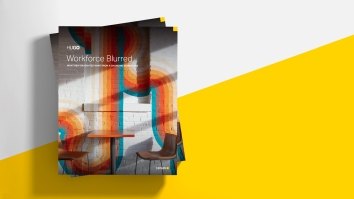
Workforce Blurred — What New Graduates Want From a Changing Workplace
The workplace is changing as are the perspectives of recent graduates and the future workforce. These candidates bring a new set of perspectives to their career needs and goals shaped by more than a year of remote learning and pandemic life. As employers navigate how to respond to the immediate shifts in workforce preferences, the outlook and attitudes of these candidates will play a key part in shaping how companies support work in a post-pandemic world.
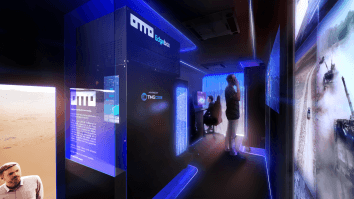
TMGcore — The OTTOmobile
A fully operational mini-data center on wheels.
TMGcore — a disruptor in the data center industry — approached Hugo to design a mobile data center that could remain fully operational while traversing rough terrain. From concept to hitting the road, the OTTOmobileTM Mobile Compute Command Center was completed in a total of five weeks in partnership with MAK Studio and Corgan’s MediaLab.

Uber Mega Skyport
Supports vertical take-off and landing of up to 1,000 flying cars per hour.
UberAIR could achieve massive scale with Corgan’s design for a future Skyport. Unveiled at the Uber Elevate Summit, Corgan’s conceptual design, CONNECT, provides the infrastructure to support vertical take-off and landing for up to 1,000 Uber eVTOLs per hour in a system of modular components that can be adapted anywhere for ultimate convenience. The vision also supports growth for up to 8,000 landings per hour (40,000 passengers).
